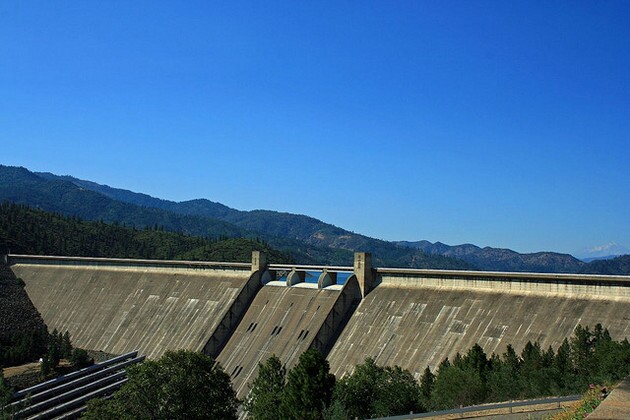Despite Drought, Sunny California Set for Summer Power Needs

Despite the devastating impact California's ongoing drought is having on hydroelectric power output, the state isn't expected to have any trouble keeping up with demand for electricity this summer -- and that's mainly due to solar power.
According to the California Independent System Operator, the independent agency responsible for managing most of the state's electrical power grid, California actually has the ability to generate substantially more power than Californians are expected to consume this summer.
According to CaISO's projections, California's summer energy use is expected to peak at 47,188 megawatts this summer as Californians crank up their air conditioning. The state's power generating capacity will be capable of putting 54,322 megawatts on the grid at that same time. That's the second-largest "operating reserve" of potential surplus electrical power grid managers will have had on tap in the last ten years.
That's despite losing about 2,700 megawatts in power generating capacity because drought has emptied the state's reservoirs in 2015, which the California Department of Water Resources says is the worst water year in the state's recorded history. That's more power than was lost to the system when the 2,254-megawatt San Onofre Nuclear Generating Station closed down in 2013.
What's CaISO counting on to keep California from browning out? 2,328 megawatts of new power plants coming online in the 12 months ending June 1 2015, that's what. 96 percent of that new capacity comes in the form of solar power plants, with wind adding another 3.4 percent and biogas making up the rest.
CaISO also plans to import power from outside the state to make up the domestic hydro shortfall. Of that imported power, some will be hydro from elsewhere in the drought-afflicted West. That includes power from the turbines at Hoover Dam, whose reservoir Lake Mead is now at its lowest level since the reservoir first began filling in the 1930s. Despite Mead's low level, CaISO doesn't expect power imports from Hoover Dam to be cut during 2015. Whether the drought will persist and impede Hoover's ability to deliver the juice in 2016 is anyone's guess.
The cautiously optimistic forecast by CaISO doesn't mean we're out of the woods: along with record drought comes increased risk of wildfires, which can take out transmission lines. When that happens, grid operators must scramble to regulate voltage on the impaired grid, which can force rolling blackouts.
If that happens, CaISO expects to use conservation measures such as the state's Flex Alert program to reduce demand for power, which the agency hopes will minimize power outages.
One interesting fact from CaISO's forecast: rooftop solar is having a measurable effect on how much power the grid needs.
Our power consumption statewide has long depended primarily on weather and the strength of the economy; the busier the state's businesses are, the more power we all consume. The state's peak power use in 2014, 44,703 megawatts, was less than half a percent above 2013's peak once you correct for weather conditions.
Why the tiny difference? CaISO adds another factor to the weather and the economy:
The low load growth is the result of slow economic recovery from the recession and the increasing trend of behind the meter solar photovoltaic installations.
In other words, more rooftop solar is going up, and that reduces the amount of power people under those solar rooftops need from the state's network of power plants.